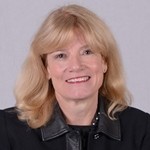 Terry Fulmer, PhD, RN, FAAN, AGSF
Terry Fulmer, PhD, RN, FAAN, AGSF
President, The John A. Hartford Foundation
(This post also appeared on the blogs for the Eldercare Workforce Alliance and The John A. Hartford Foundation.)
Are you a caregiver? Sooner or later, caregiving touches us all.
According to a new report by the National Academies of Sciences, Engineering, and Medicine, Families Caring for an Aging America, nearly 18 million individuals currently provide care to an older family member, spouse, or friend. Millions more anticipate serving in a caregiving role in the future. Most of us, as we age, will eventually become care recipients.
For individuals and for society as a whole, the preparation of our nation’s workforce to address caregivers’ needs should be of paramount concern.
Family caregivers are a large and absolutely critical component of our health care workforce. They are the primary providers of care for our nation’s older adults, yet they remain almost invisible. While they perform a host of vitally important activities, from meal preparation and house cleaning to complex medical tasks like wound care, they often do so with no training, limited support, and little recognition.
As the Academies’ report documents, our fragmented health care system and the demands it places on families often result in physical, emotional, and financial challenges for these heroic caregivers, which puts their loved ones at risk. This is unsustainable, dangerous, and wrong.
The good news is that health and social service professionals, as well as direct care workers such as home health aides and nursing assistants, are in a unique position to support family caregivers. To make that possible, we must work to create a health care system that is not just person-centered, but also family-centered, as called for in the report. The entire care workforce needs to be equipped with training and systems that support this transformative approach. Continue reading

